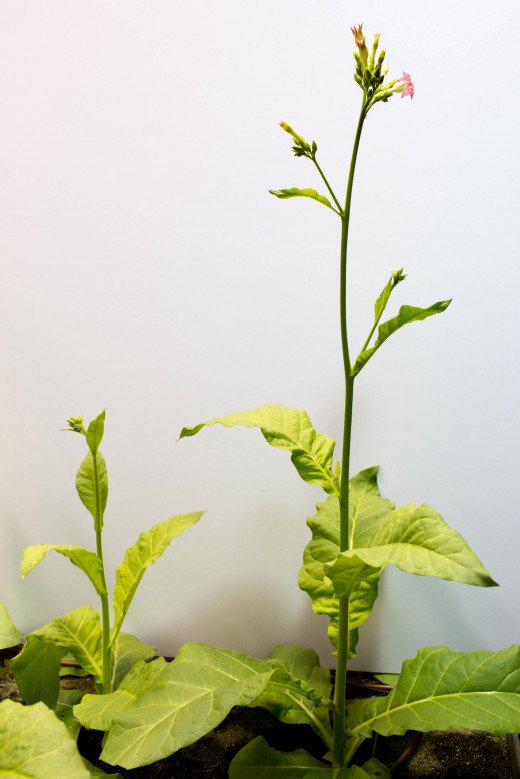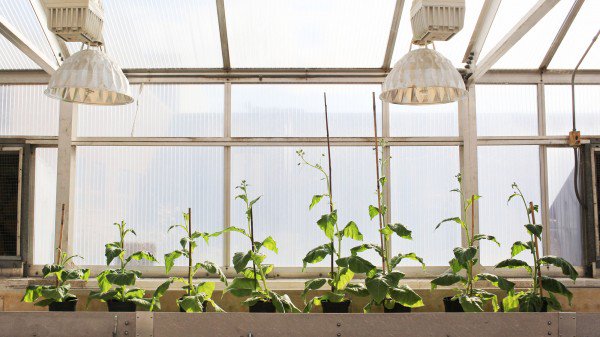Gene engineers make super-size plants that are 40% larger
Researchers hope to create a new “green revolution” by improving photosynthesis.

Genetic engineers in Illinois have designed tobacco plants that grow as much as 40% larger than usual. If similar changes can be made to soybeans or potatoes, it could increase food supplies—though you won’t see the new plants in fields for many years.
A team at the University of Illinois and the United States Department of Agriculture says it gave tobacco what’s called a “photorespiratory bypass”—a cassette of genetic changes that let the plants turn sunlight into energy more efficiently. The genetically modified plants are taller than normal ones and weigh more.
Heike Sederoff, a plant scientist at North Carolina State University who has carried out related laboratory studies, describes the new report, published in the journal Science, as the first time such large gains have been seen in a field trial of this type. “It confirms the potential for real agricultural benefits,” she says.
A number of groups worldwide are attempting to supercharge photosynthesis. As part of that effort, scientists at Illinois are using more than $80 million provided by the Bill & Melinda Gates Foundation and other funders who hope genetic engineering could lead to a jump in farm productivity.

In 2016, University of Illinois bioengineers showed how to make tobacco plants grow 20% bigger by helping them respond more quickly to changes in light and shade.
This time, they made plants that use less energy during photorespiration, a process plants need to clear out a toxin, glycolate, created during photosynthesis. To do it, USDA biochemist Paul South was part of a team that added about 16,000 letters of novel DNA instructions to tobacco plants. Those genetic changes included a more efficient glycolate disposal pathway that originated in bacteria.
“I was skeptical the entire way, but you can really see the difference,” says South.
Researchers work with tobacco because it grows quickly and is easy to genetically modify. South says the team is now making similar gene changes to potatoes, soybeans, and cowpeas. However, it could take 20 years to prove that the modifications actually produce more food and to get the new crops approved by regulators.
“I do think these kind of plants will reach the market at one point, but it is a very long way,” says Sederoff.
RELATED RIPE OBJECTIVES
Photorespiratory Bypass